Road types are divided into three categories: public roads, other drivable roads, and non-drivable roads. This article explains some of the basics of the road hierarchy and how waze uses it in routing. Please look for country and regional guidance on what information is available and how to use it to determine road typing.
Please see below for more information about the hierarchy of roads, and for links to related information about determining road types at complicated junctions with roundabouts or at-grade connectors.
|
| |||||
Overview
In general:
- When planning a route, major roads will sometimes get priority over smaller roads.
- For longer routes, some lower road types will often be ignored outright in favor of higher-type roads.
- Since freeways are given the highest priority of all, having other high-type roads is necessary to provide viable alternatives to the routing server in case freeways are clogged with traffic.
- When zoomed out, more important roads should still appear while less-important types are not shown. Proper road typing will help drivers orient themselves when looking at long routes or travelling at high speed.
Public roads
Public roads are those who can be driven by anyone. Naturally, they are by far the most important roads on the Waze map.
Highways
Freeway Major Highway Minor Highway .
Waze distinguishes three classes of highway: Freeway, Major Highway, and Minor Highway.
Waze's definition of "highways" includes main roads, especially those connecting major towns or cities. They are the backbone of the traffic network. They are used for two purposes:
- as arterial roads to carry traffic over long distances, from one city to another, and
- to carry traffic from collector roads to freeways, where applicable.
Many countries have several systems of national, state or province, and local highways.
Freeway
Freeway
A freeway is a highway designed for high speed traffic, with fully controlled access over entrance to, and exit from, the highway.
Freeway is the highest functional class of road.
The following roads shall be classified as Freeway:
- Roads which meet the criteria of a controlled-access highway:
- No at-grade crossings.
- No at-grade intersections.
- No direct property access.
- No stop lights (except sometimes on ramps).
- No stop signs.
- Except at the beginning or end of the controlled-access roadway, connected to other roads exclusively by interchanges:
- Entrance via ramps only, typically with acceleration zones.
- Exit via ramps only, typically with deceleration zones.
- Note: Many freeways continue as non-controlled-access roadways; the road should be set as Freeway until the point at which access becomes non-controlled.
For information on how to best layout freeways and their junctions, please review the section on freeways in the Junction Style Guide. For specific guidelines in other countries refer to this page for more information.
Major Highway

Major Highway
Major Highways are important roadways used to provide direct links between regions not served by freeways, and as alternatives to freeways in case of heavy traffic or incident.
Major Highways may be:
- Spurs, loops, and business alternatives of freeways, if they are not themselves freeways.
- Major roads that function as collectors for freeways
- Major non-freeway routes that link large cities
- Partially-limited-access roadways which have both interchanges and at-grade intersections. These are sometimes called expressways, but not every road named "Expressway" is a Major Highway.
Minor Highway
Minor Highway
Minor highways are used as collectors for #Major Highways, and as secondary routes for traveling between cities over moderately long distances.
Roads classified as Minor Highway include
- Business, Loop, alternate, and other spurs and connectors of #Major Highways.
- Collectors for #Major Highways.
- Secondary routes for travelling between cities, less important for longer trips than the #Major Highways
Ramp
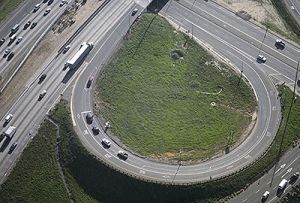

Ramp
Ramps are said to be "routing neutral". They can be used with any road type without causing routing problems. Ramp names do not appear on the client application map, but do appear in the text for routing directions. The ramp type can be used where the name is long and should not show on the map.
Ramps are most often used for:
- Roads which connect roadways to other roadways as part of an interchange. This includes all freeway exits and entrances.
- Roads connecting freeways and highways with Rest areas, parking areas, and service plazas (e.g., "to Service Area").
- Special-purpose usages such as Median U-turn intersections (MUTI), jughandles, and
Ramps are, in general, not used for turn lanes or At-grade connectors, unless they fit into one of the exceptions
Information on how to lay out ramps and set the proper angles from the main road can be found in the Junction Style Guide.
Streets
Primary Street Street
The Street types are for local and short-distance travel. Street types are also used at the beginning and end of long routes.
Primary Street
Primary Street
Primary Streets are roads used with medium-low traffic densities which are used as collectors to bring traffic from local streets to highways and vice versa. They are also used to connect minor highways to each other.
The following roads are to be classified, at minimum, as Primary Street:
- Loops, Spurs, business routes, and other connectors of Minor Highways
- Frontage roads which serve as the means of access between freeways/expressways and surface streets.
- Where Frontage roads connect freeways to Major or Minor Highways, it might be necessary to set them higher than Primary Street
Street

Street
Any road for public travel which does not meet the criteria for any other type shall be classified as a Street. Often shown as "local roads" in reference maps.
Other drivable roads
Dirt Road / 4X4 Trail
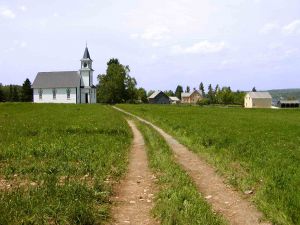
Dirt Road / 4X4 Trail
Generally, a road that is not paved well enough for every passenger vehicle.
Roads of the Dirt Road / 4X4 Trail type will not be used if the user has selected the "Don't allow" option in the client, and segments longer than 300m will be avoided if the user has selected "Avoid long ones".
In some places improved unpaved roads (gravel, macadam, etc.) are set to this type. In other areas, improved unpaved roads, and possibly certain dirt roads, will be set to other types, as if they were paved. Check your regional wiki pages or contact your regional coordinator for further guidance.
Parking Lot Road
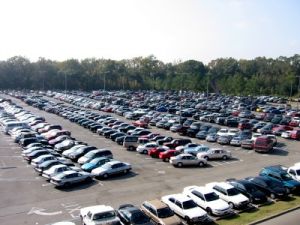
Parking Lot Road
These are used to map driving lanes within parking lots as well as publicly accessible roads such as alleys that should not be used for traffic routing unless directly at the start or end point of a route.
The waze routing server assesses a penalty for any transition FROM a parking lot road TO any other type of road. This penalty is typically high enough to prevent waze from choosing parking lots as short cuts. No penalty is assessed for routes that cross other road types without travelling on them. Waze will not highlight slow speeds (automatically detected traffic jams) on Parking Lot Roads.
Typical applications of Parking Lot Road are:
- All necessary segments in the Parking Lot -- not all rows. For more, see Best map editing practices - Parking Lots.
- Roads inside many Apartment Complexes, Trailer Parks, Schools, and Universities unless they meet the criteria for Private Road
- To prevent Waze from assuming drivers driving slowly or parked in the parking lot are in a traffic jam on the main road. This is done by drawing in the drivable portions of the parking lot that are near main roadways.
- To prevent Waze from creating "missing road" automated Map Problem reports inside parking lots.
Information on mapping a parking lot landmark "place" is covered in Places - Parking Lot.
Private Road
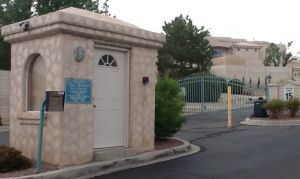
Private roads
Private roads are used for roads that are private; not open to the general public.
The waze routing server assesses a penalty for any transition FROM a private TO any other type of road. This penalty is typically high enough to prevent waze from choosing private roads as short cuts. In this way, private roads are like parking lot roads. Unlike with parking lot roads, Waze will highlight slow speeds (automatically detected traffic jams) on Private roads.
Private roads are typically used for:
- Gated communities, schools, universities, and businesses with gates or guards.
- Any street with a legally enforceable sign for local traffic only
Private roads must not be used for:
- Unrestricted public roads.
- Marking slow, damaged, or under-construction public roads. There are more appropriate ways to handle these situations.
Non-drivable roads
Your car should not be here! The Waze app is intended only for drivers of motor vehicles. Non-motorists using Waze near drivable roads can add bad information to Waze's speed and traffic database. Do not map in a way that encourages non-driving Wazers. Do not use routable road types such as Walking Trail for roads that are not meant for waze routing -- they can cause routing problems.
Only non-routable road types such as Railroad or Pedestrian boardwalk should be used to map portions of non-drivable road that are useful for visual reference.
If the GPS Points layer clearly shows frequent improper Wazing on a non-vehicle route near drivable roads, consult an expert about using non-routable roads to keep bad data out of Waze's speed and traffic database.
- As of June 2015[update], the non-drivable road types of Pedestrian Boardwalk, Stairway and Runway/Taxiway should not have any type of junction with a drivable road. When crossing drivable roads, these non-drivable road types should be bridged across without a junction and set at a different elevation.
- It is OK to junction drivable roads with the Railroad type. See specific details in the Railroad section later on this page.

Routable
Walking Trails
| | | | | Walking Trail | | | | |
Never use the Walking Trail road type for ordinary hiking paths or bike paths. Most hiking and bicycling paths should not be on the map at all. Walking Trails may have strange side effects on nearby routing. Use Walking Trails only with assistance from an expert in Walking Trails. They should only be used in rare cases.
Waze treats walking trails much like "Dirt road / 4X4 Trail" but displays them differently.
Applications
In rare cases, connected Walking Trails can bring drivers to destinations where otherwise Waze might fail to offer the best route. For example:
- A concert pavilion in an urban park accessed by a pedestrian path from a distant parking lot.
- A train station reachable from either side of the tracks but with no drivable road across them, or a rest area in the median of a divided highway.
- A destination addressed on a non-drivable footpath.
A connected Walking Trail may be used to route drivers to such destinations. If the Walking Trail goes through from one drivable road to another, ensure that outgoing turn restrictions are red to disallow through routing via the Walking Trail. Because this is an advanced use of Walking Trail, lock it to protect it from puzzled beginning editors. Always work with a routing expert.
Naming
If destinations are addressed using House Numbers on a Walking Trail, it is essential that the Walking Trail's name and city fields be set properly so that routing to the addresses will work. For other routing situations, Walking Trails should be named to alert drivers that they must leave their car. For example, a Walking Trail connecting the two sides of a train station may be named "Station Access Footpath".
Non-routable
Pedestrian Boardwalks
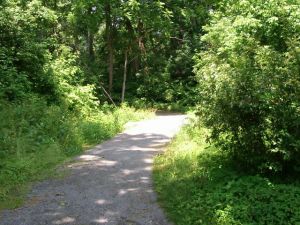

| | | | | Pedestrian Boardwalk | | | | |
Pedestrian Boardwalk is used wherever a non-routable trail or boardwalk is needed.
Stairway
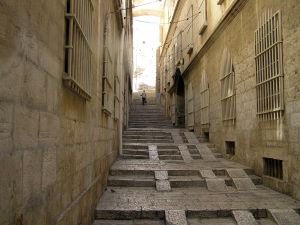
| | | | | Stairway | | | | |
Railroad
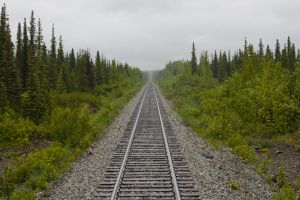
The |-|-|-|-|-|-|-|-|-| Railroad |-|-|-|-|-|-|-|-|-| road type serves three purposes in Waze.
- It provides drivers with visual orientation relative to railroad and light-rail tracks.
- In the common case where passenger-carrying tracks lie parallel with roads, mapping the tracks allows Waze to recognize spurious speed data from people Wazing on the train and prevent it from corrupting speed data for the adjacent road.
- When a railroad crosses a drivable road segment at grade (same elevation) the routing server can better determine delays at that crossing.
Guidance from Waze says to represent railroads generally as they appear in real life, whether at ground level or at an elevation above or below ground level. Railroads that junction with drivable roads should be mapped that way, and all turns to and from the railroads should be restricted. Although railroads do not currently show in the mobile app, they are expected to in the future.
As of July 2015[update] the automated Map Problem search algorithm will identify suspected errors at railroad crossings. It is common to see the “restricted turn might be allowed” error where a railroad crosses a drivable segment nearby to where another drivable segment also crosses. These kinds of map error should be marked as “Not Identified” so that they are not shown again at that location. Do not enable turns at railroad crossings.
Use the following guidelines when mapping railroad segments:
- Long railroad segments bearing a city name can contribute to city smudging. This can be avoided by checking "none" for city or drawing shorter segments.
- Long stretches of below-ground railroad do not serve any of the three purposes outlined above.
- Railroads may be named "Railroad" unless specific rail line name information will be useful to orient drivers.
- Waze guidelines say:
- Only use the railroad road type. Any routable type could cause a hazard to human life.
- Set the elevation just as you would a drivable segment.
- Create junctions between drivable roads and railroads.[rr]
- Set railroad to 2-way directionality. Restrict turns to and from the railroad segments.
- When mapping railroad tracks, keep it simple and focus on those near drivable roads
- spurs are only necessary if they cross drivable roads.
- Rail yards can be represented with very few segments -- one on either edge of a multi-track area
- Where multiple lines cross a road, use one segment in most cases, and never more than two.
- Parallel lines should be at least 5m apart
- Keep segment lengths under 10,000 meters – the longer the segment length, the more sluggish the editor is to respond to changes.
^rr Note: The routing server will properly account for delays at railroad crossings through a segment without a junction. However, with a junction, the historical data for the rail crossing will be more accurate.
Runway/Taxiway
Airport runways and private airstrips may be mapped using the Runway/Taxiway road type. The Runway/Taxiway type is for display only and must never connect to drivable road segments. If a drivable road and a runway cross, set the elevation of the road below that of the runway and ensure there is no connection. Draw each runway as a single segment and lock it to prevent lower-ranking editors from attaching a road. Do not form junctions where runways cross each other.
Name each runway using the word Runway and the runway designations with the lower number first and a hyphen between runway numbers (e.g., "Runway 16R-34L".) For the "City" field of runway segments, check "None" to avoid any chance of city smudging.

Despite its title, the Runway/Taxiway road type should never be used for an aircraft taxiway because it would render the same as a runway and confuse the display. Taxiways not intended for frequent access by street vehicles should not be mapped at all with any road type. Taxiways that do commonly serve street vehicles as well as aircraft, for example at fly-in communities, may be mapped as Streets provided they remain disconnected from any runway.
Ferry
| The Ferry Road type is not to be used at this time. Do not use the Ferry Road type for any purpose. See ferries page for more information on how to map ferries. |
Roundabouts 

Roundabouts have few principals:
The first one, each node on the roundabout can only be connected to no more than one segment.
Each connection has a spectrum that exists in order to notify the Client on how to define the message (Go straight, exit through the 2nd / 3rd / 4th exit).

The system will include the radius border from the center and notify the user accordingly.
For more information on when to create a Roundabout or a loop instead, please review the Junction Style Guide.
For information on what type of road to set a Roundabout to, please review Creating and Editing a Roundabout